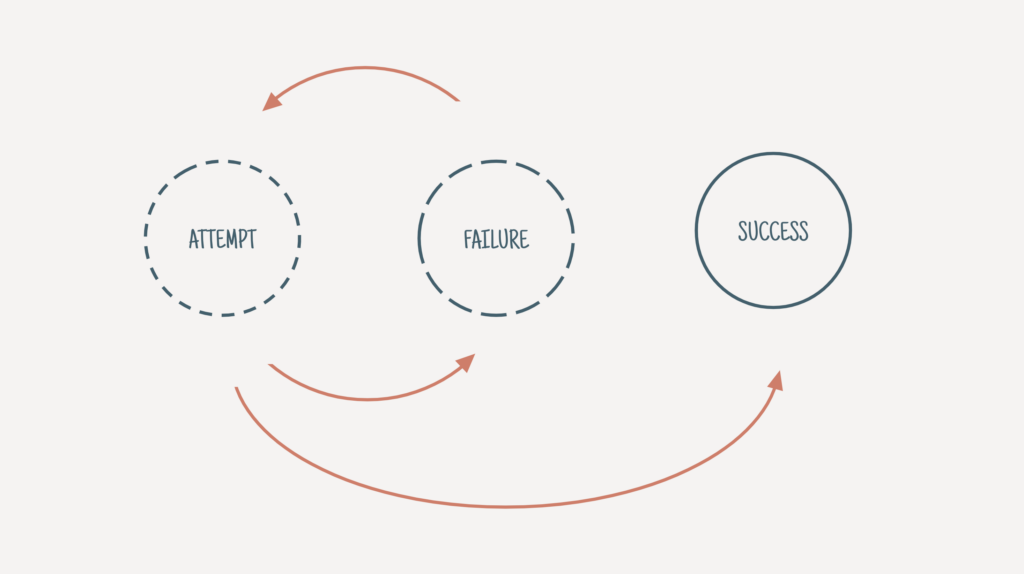Original link: https://shyrz.me/cyberclip-38-atychiphobia/


Issue 37 of Issue 23 07 15
Ladies and gentlemen, see letter like face. In hot summer, pay attention to heatstroke prevention. Thank you for your continued support!
In this issue, “Transforming Fear of Failure into Growth of Curiosity” explores modern people’s fear of failure and proposes practical ways to deal with it; Discovery, and how it applies to the medical aesthetics industry.
Hope to be enlightened.

Stream Your Ideas to the Top

IdeaChat →
IdeaChat is a conversational app powered by artificial intelligence to help you realize your next big idea.
Sign up for IdeaChat and get 100 free credits for trial. IdeaChat supports WeChat or Alipay payment, which provides a stable way for domestic users to use ChatGPT. If you want to use it for a long time, please consider purchasing the service according to your own situation.
(Click the link above to subscribe or use the promo code SHYRZ when paying to enjoy a 20% discount, and I can get a certain percentage of rebates from it)

Turn Fear of Failure into Curiosity Growth
→ Original link : Turning Fear of Failure into Increments of Curiosity — Anne-Laure Le Cunff / NessLabs
When I was young, I really wanted to live in Japan. Japan is a country with very strict immigration regulations, but my university has an exchange program to study in another country for a semester.
The only problem: the partner Japanese university is one of the most selective in Japan. I remember thinking, “There’s no way I’m going to get in.”
I told my mother about my doubts.
“It’s not up to you to decide,” she said.
And, as always, she’s right. We are constantly limiting our options by making decisions for others. All I had to do was apply, and then it was up to the university to accept or not accept my application.
You’ve probably seen this pattern countless times in yourself and others. It’s so much easier not to fail when you’re not trying. It’s also much easier not to make mistakes when you’re not taking risks. But personal growth can also be made more difficult when we avoid stepping outside our comfort zone.
If this fear of failure is so detrimental to our personal and professional development, why is it so common?
we all want to be loved
The fear of failure begins in early childhood. We are social animals and need to be accepted by others, which starts with the acceptance and love of our parents. In a study examining the relationship between young athletes and their parents, researchers found a correlation between parents’ high expectations for achievement and children’s fear of failure. The more negative reactions parents show to something they do.
The fear of failure begins in early childhood. We are social animals and need to be accepted by others, which starts with the acceptance and love of our parents. In one study , researchers looked at the relationship between young athletes and their parents and found a correlation between parents’ high expectations for achievement and children’s fear of failure. The more parents reacted negatively to what they perceived as their child’s failure, the more the child feared the consequences of “failure.”
In some people, this can develop into atychiphobia, an irrational and paralyzing fear of failure, often accompanied by intense feelings of panic or anxiety, as well as physical symptoms such as difficulty breathing, abnormal Rapid heartbeat and sweating.
For most of us, however, the fear of failure manifests itself in a more subtle way, primarily self-doubt that prevents us from exploring uncertain paths:
- We put off doing something because we’re not sure what the outcome will be.
- We avoid trying new things in front of others.
- We avoid doing things we know will improve our lives because we don’t have all the necessary skills.
- We create the illusion of growth for ourselves through reading, researching, watching videos, etc…anything is fine, we just don’t dare to do it for fear of being judged by others.
But the good news is, no one wants you to fail. Most people you know will be happy to see you succeed, while those who don’t know you won’t care. So how do you change your mindset and overcome your fear of failure?
your perception of possibility
When you start reading a novel, you rarely expect to finish it in one sitting. Instead, you might read a few chapters, and then a few more, until you’ve read the entire book.
Oddly enough, we seem less pragmatic when it comes to personal goals.
It’s very common to focus on a long-term goal and never get started because it seems too out of reach. But we can reshape our perception of possibility by breaking our journey into smaller, more attainable segments.
In this case, “achievable” does not mean that you will succeed, but that you can test it in the short term without any excuses to procrastinate.
For example, you fear public speaking and then make the excuse that no one has ever asked you to speak at a conference anyway. A small, achievable experiment is to apply to 5 local meetups to give a talk. While speaking in public may sound scary, filling out online forms is totally doable.
Let’s say you have a phobia of public speaking and you make the excuse that you’ve never been invited to speak at a conference anyway. A small but workable experiment is to apply to five local meetups, where you give presentations. While public speaking may sound scary, filling out an online form is totally doable.
Likewise, you may fear others will judge the quality of your writing. Writing a book is a daunting task that’s easy to avoid (“I’d love to write a book, but I don’t have the time”), whereas writing a blog post is much easier.
fail like a scientist
If you look at life as one giant experiment, and your goal is to explore as much as possible to get answers to your questions, then failure becomes an investment in getting closer to those answers. In the words of Seth Godin, ” It’s less expensive to be wrong than to do nothing. “
Scientists often repeat experiments thousands of times to arrive at a final answer. And often the answer they get is that their initial assumptions were wrong. Not experimenting might keep them in a comfortable “nice” state all the time, but that wouldn’t be any science.
That’s why facing failure like a scientist is so powerful. By making decisions that allow you to learn new things , you will succeed—success is learning, developing, and growing as a human being. Failure becomes a way of cultivating vitality.

growth of curiosity
Another way to eliminate the fear of failure is to think like a child. Kids tend to try just for the sake of trying: what happens if I press this button? How does it feel to touch this thing?
Reconnecting with your inner child is a great way to overcome your fear of failure. For example: what happens if I publish this article? How does it feel to speak my mind?
Instead of imagining all the ways you could fail, turn your doubts into questions. Maybe nothing good is going to happen, but a child doesn’t take answers for granted.
Start with something small and move on to the next cycle—a larger cycle of growth . Over time, your mind becomes more and more accustomed to trying new things and expanding its horizons.
In fact, you can start applying this method of deliberate experimentation right now:
- Pick one thing you’ve been putting off because you’re afraid of failing. Is it public speaking? Starting a blog? Making a podcast? Launching your first product? write it down.
- Define a small experiment that can be designed to explore this fear. It should work. For example, apply to a few meetups to speak, produce an episode of a podcast, or write an article on Google Docs to share with a few friends. It should be simple enough that you can do it in a few hours at most.
- go a head! Don’t plan anything. Don’t research the best way to solve a problem. Don’t announce it on Twitter. just do it.
- Reflect on what happened. Any negative reactions? How are you feeling? what have you learned Write down all these thoughts. This is a great way to practice metacognition .
- Repeated practice. Constantly identify incremental steps in the form of experiments that are outside your comfort zone but not so scary that you become paralyzed. Again, avoid overthinking this beforehand. Just do it, and reflect only after the experiment is done.
You may feel some anxiety or discomfort during this process, but addressing your fears and trying new things you care about is the best way to avoid another, more difficult feeling to control: regret.
deadliest thing in the world
→ Original link : The World’s Deadliest Thing — Anthony Warner / The Angry Chef / 2023-11-08

Deadly sausages in Stuttgart’s Old Town
In Stuttgart at the end of the 18th century, Justinus Kerber, in the spirit of many great medical pioneers, nearly committed suicide in the name of science. While investigating a series of mysterious cases of so-called “sausage poisoning” – the rapid and often fatal paralysis associated with cured meat – he dripped the distilled extract of several suspicious Italian salamis on his body. on the tongue.
Given what we know now, Kerber was extremely lucky to suffer from dry mouth only once. He suggested that the essence he had isolated might have some medical benefits, an observation that was prophetic. Just over 200 years later, that same substance would become the most valuable substance in the world, spawning a multi-billion dollar industry. But in the meantime, it will continue to cause enormous suffering and fundamentally change the food we eat.
Around 1895, while investigating the deaths of a group of musicians who had eaten cooked ham, a Belgian scientist named Emile van Ermengem discovered the cause of Kerber sausage poisoning. At the core of the bacteria, the disease is known as botulism, derived from the Latin word “botulus,” meaning sausage. Later research showed that the bacteria, which van Elmenheim named Clostridium Botulinum, could only grow under specific conditions. Conditions inside where badly processed meat is stored are ideal, but when conditions change, the bacteria stop growing, forming highly resistant spores, which remain in this form until conditions suitable for growth again arise.
A few years later, scientists discovered an even more shocking fact. The spores that produce these deadly bacteria are found almost everywhere. They are found in soil, vegetable surfaces, animal manure, and in river beds. They can survive boiling, freezing, and handle highly acidic environments. Thankfully, these spores are also harmless and if ingested, they pass through the body unchanged. But under the right conditions, they turn back into bacteria, producing deadly neurotoxins. If this toxin is ingested, even in the tiniest dose imaginable, it can cause slow paralysis throughout the body, eventually stopping vital processes like breathing. For those unlucky enough to consume it, the survival rate is about 60%.
In order to grow, botulinum spores need an environment that is low in salt, oxygen free, low in acidity, enough water, protein and some other nutrients. The inside of cooked meat is ideal, but if not properly prepared, canning is also an ideal environment. Thus, during the expansion of the food canning industry in the early twentieth century, botulism almost completely killed this nascent industry, and cases became increasingly common. It wasn’t until the 1920s that Karl Frederick Meyer, a prominent infectious disease expert working for the National Canners Association, formalized sterilization and temperature control techniques to combat botulism. threaten. Mayer also worked on vaccines, disease epidemiology and milk processing, and was an unsung hero in global public health. Considered by many to be the Pasteur of the 20th century, his work undoubtedly saved millions of lives.
To prevent botulism in canned food, all parts of the sealed can must reach an internal temperature of 121°C, as this is sufficient to destroy the botulism spores and free the contents of the can from the possibility of bacterial growth [1]. Understandably, because manufacturers are overly cautious, this results in a lot of heat energy being put into the canned product, often resulting in a slightly burnt flavor, especially in dairy products, cream sauces, or other high-sugar foods.
Another way is to acidify the contents to a pH below 4.5 (although in most productions the effective upper limit is 4.2-4.3, just to be sure), then heat to about 91°C to kill any bacteria, this process Known as pasteurization. Although the spores remain intact at this temperature, the low acidity means they cannot grow into bacteria or produce deadly toxins. It’s this process that allows us to create high-quality canned pasta and curry sauces, processed at low temperatures, similar to standard cooking. Most tomato sauces have a naturally low pH, and many sweet and sour products have a pH well below 4.2 due to naturally occurring vinegar or citrus components. Many other foods will require an additional acidulant — usually vinegar or citrus concentrate — to be safe, which can change their flavor significantly.
In this way, Botox has shaped our modern food system. That’s why canned goods have a burnt metallic taste, and canned sauces can sometimes have a pungent sour taste, especially those creamy sauces that don’t contain natural sourness. It’s also why it’s hard to find good room-temperature cheese or white sauce, and why subtle aromas are often lost in canned goods. The same bacteria are also responsible for adding nitrites to processed meats, a combination of nitrite and salt that inhibits the growth of bacteria and also gives bacon and ham their distinctive metallic flavor and pink color.
It is thanks to these precautions, and the tireless efforts of hundreds of food safety experts, that cases of botulism are extremely rare in our modern food system. In the UK, between 1990 and 2005, there were only 5 reported cases affecting 6 people, resulting in 2 deaths, which means that you are 15 times more likely to be struck by lightning. The only non-fatal case linked to the commercially produced food at the time involved a man who ate some hummus that had been out of the freezer for weeks and it smelled so bad that his family refused to approach it. 2〕.
It may be surprising that such rare incidents of poisoning have affected our modern food system so profoundly, but that may be because the toxins produced are among, if not the deadliest, on Earth. It is estimated that 6 grams of botulinum toxin in pure crystalline form, about one teaspoon, is enough to kill 200 million people. The lethal dose when taken orally is about 30 billionths of a gram, and if you want a relevant comparison, that’s roughly equivalent to if you cut a poppy seed into 10,000 equal pieces and eat one of them. This amount is too small to be meaningful at all.
This toxic potential of Botox has long been of serious concern. Back in 1940, both the U.S. and German armies were trying to develop weapons with botulinum toxin, a threat so serious that the Allies stockpiled a million doses of the antitoxin before D-day landing. Since then, there have been rumors of various rogue states and terrorist groups refining the toxin, but thankfully, it has proven difficult to weaponize and there have never been confirmed deaths . Several attempts by the doomsday cult Aum Shinrikyo to drop the toxin on U.S. military bases in the 1980s failed, and their attacks went unnoticed by authorities. In 1991, the Iraqi government admitted to producing so much fuel for its warheads that it was thought at one point to stockpile enough of the toxin to kill everyone on the planet, though it’s not clear how they’re going to convince everyone to eat it.
Throughout the 1990s, a variety of potential uses emerged, with botulinum toxin (Botox) now licensed for the treatment of muscle spasms, overactive bladder, cerebral palsy, and migraines. But what turned it from a useful muscle relaxant to a blockbuster drug was the serendipitous discovery of a couple of Canadian doctors. Vancouver-based ophthalmologist Jean Carruthers, who is using Botox to treat eye spasms, was surprised when her patient complained that the injection didn’t go to her forehead as usual and said she was sad. Loved the Botox injections, it made her skin smooth and youthful. At the time, Jean’s dermatologist husband Alastair was looking for ways to help wrinkle sufferers, and the couple teamed up for the first time to offer Botox as a cosmetic treatment.
Rapid, long-lasting and highly visible cosmetic results make Botox an instant success. In small doses, it can also cause damage to the nerves leading to fatal paralysis in cases of poison poisoning, but helps to eliminate forehead lines and crow’s feet, the only side effect is the inability to express emotions through facial expressions and occasional eyelids sagging situation. A unique, wrinkle-free look with a touch of surprise caught on among Hollywood A-listers and eventually the world. Of course, in great irony, many of the celebrities who publicly advocate for a clean-living, chemical-free lifestyle are also early adopters of a treatment that involves injecting your face with the deadliest substance on earth . If any of them were surprised by this seeming paradox, they certainly didn’t show it.
The Carruthers’ casual conversation created a multibillion-dollar business for Allergan. As Botox becomes more accessible, it’s quickly becoming the most common aesthetic medical procedure in the world. In 2017, more than 7 million faces were injected, an 800% increase from the beginning of the century, with annual sales of $2.3 billion. Not content with being the deadliest substance on earth, the pure crystalline form of botulinum toxin is now quite possibly the most valuable, with an estimated market value of $100 trillion per kilogram. The annual consumption of the entire global facial paralysis industry is only a few milligrams.
Quite high on the list of microbes that shaped humanity, botulism has dramatically impacted our modern food system, lured bioterrorists, and created a multibillion-dollar industry. Botulinum toxin affects us all, affecting the flavor, distribution, storage and packaging of the food we eat. We rarely have to think about it, and it’s a testament to the intensely dedicated work of thousands of food industry professionals around the world who have helped create the safe and effective food system we enjoy today.
[1] This statement may not be entirely true. There are some heat-tolerant microbes with spores that can survive these temperatures, but none that cause food poisoning. Most heat-tolerant microbes are usually kept inactive, stored in cans at room temperature, although they can sometimes cause spoilage in warmer climates.
[2] In 2011, a high profile case occurred in the UK involving 3 children, luckily no fatalities occurred. It had something to do with a product made by the company I was working for at the time, although subsequent investigations found no one within the company responsible. I’ll write about this in a future post because it’s an important and interesting story.

 Tech : When digital nomads come to town
Tech : When digital nomads come to town
Cities from Canggu to Medellin welcome tech workers, but locals complain they are overpaid. Art : 10 Van Gogh Self-Portraits You Should Know About
Art : 10 Van Gogh Self-Portraits You Should Know About
Vincent van Gogh painted 36 self-portraits in just 10 years. These works are an amazing source of knowledge, not only about what Van Gogh looked like, but how he developed as an artist over the years. Most importantly, his self-portraits help us understand what he wished to be perceived as an artist, and look at his state of mind—the crux of his story. Games : Deep Dive: From Inspiration to Coherence, Building Sifu’s World
Games : Deep Dive: From Inspiration to Coherence, Building Sifu’s World
Sifu’s art director, Paul-Emile Boucher, explains what went into the development of the game’s art direction. Health : 5 real causes of insomnia|How to solve it from the root?
Health : 5 real causes of insomnia|How to solve it from the root?
Why we suffer from insomnia more and more, and how to improve it. Society : How Elites Rule Society
Society : How Elites Rule Society
[Long video] From materialism to Weber, from Pareto to Bourdieu, three questions are answered in detail: 1. How the elite emerges; 2. How the elite rules; 3. How the elite fails.

 If you like CyberClip and want to help me run it better:
If you like CyberClip and want to help me run it better:
- Forward to a friend or social network
- See the Advertise page Contact me to advertise
- Give me appreciation in Aifafa or WeChat, welcome to note title, email
- Click below with
 Marked promotion links, I can receive a meager sponsorship for every valid click of yours
Marked promotion links, I can receive a meager sponsorship for every valid click of yours - In case you have a need, pass the following with
 Marked promotion link registration fee, I will be able to get a certain percentage (marked) rebate from your payment. Please do what you can and consume rationally.
Marked promotion link registration fee, I will be able to get a certain percentage (marked) rebate from your payment. Please do what you can and consume rationally.
 Thank your for your support!
Thank your for your support!


Was this email forwarded by a friend or seen on a social platform? If you think it’s not bad, welcome to subscribe !
If you are interested in advertising on CyberClip, please see our Advertise page and get in touch with me.
CyberClip is a cyber clipping that selects valuable content on the Internet. Every two weeks, it covers new anecdotes, hot issues, cutting-edge technology and other things about life and the future.
 Thank you for reading, welcome to reply, and praise Shi Qi.
Thank you for reading, welcome to reply, and praise Shi Qi.
 Past content | Discussion group | Personal blog
Past content | Discussion group | Personal blog

This article is transferred from: https://shyrz.me/cyberclip-38-atychiphobia/
This site is only for collection, and the copyright belongs to the original author.